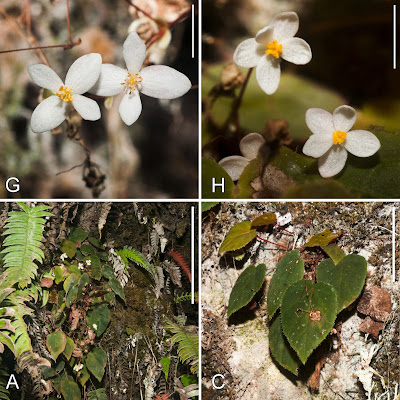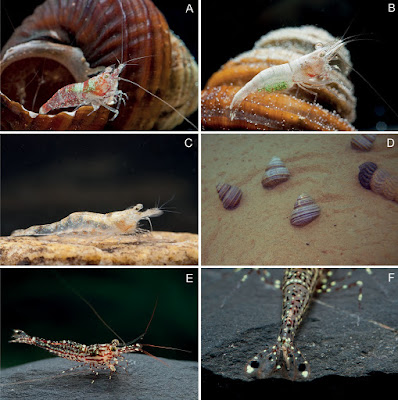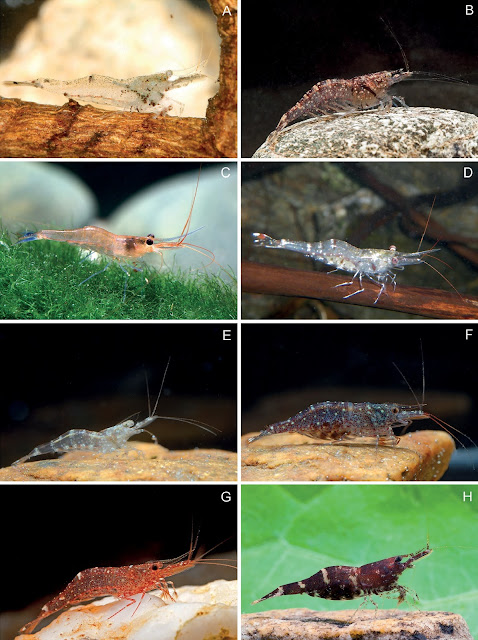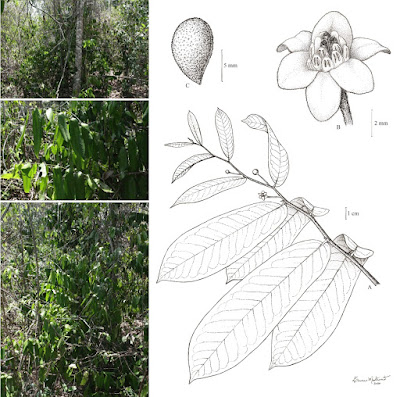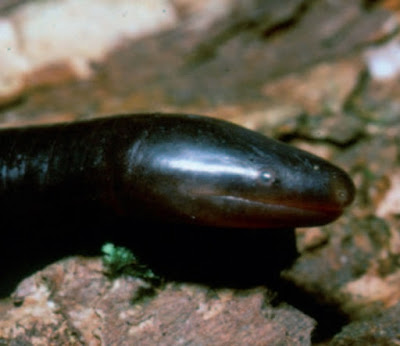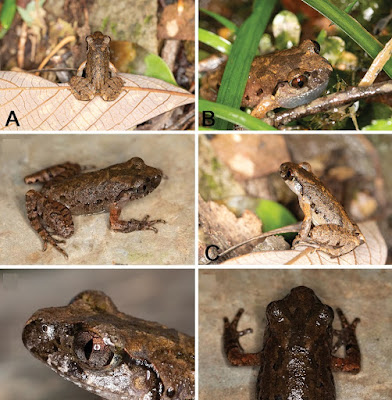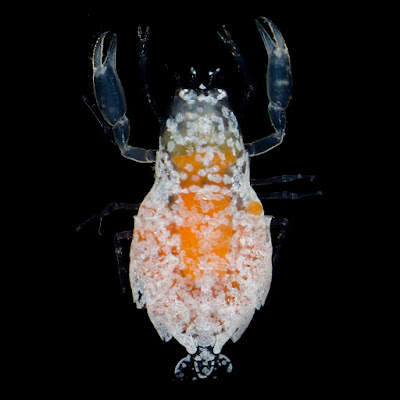[Most Recent Entries] [Calendar View]
Wednesday, January 6th, 2021
| Time | Event | ||||||||
| 1:38a | [Botany • 2016] Begonia speculum & B. erythrothrix (Begoniaceae, sect. Ignota) • Two New Peruvian Species of Begonia (Begoniaceae) and an Amended Description of Begonia thyrsoidea Abstract Begonia speculum is described and illustrated as a new species endemic to the San Martín Region of Peru, and compared with Begonia cremnophila Tebbitt and Begonia lutea L.B.Sm. & B.G.Schub. Begonia erythrothrix is described and illustrated as a new species endemic to the Cuzco Region of Peru, and compared with an updated description of Begonia thyrsoidea Irmsch., which is lectotypified. Using International Union for Conservation of Nature criteria, Begonia speculum is considered Vulnerable; B. erythrothrix and B. thyrsoidea are assessed as Data Deficient. Keywords: Begonia cremnophila, Begonia sect. Eupetalum, Begonia sect. Quadriperigonia, Begonia thrysoidea, Peru Begonia speculum Moonlight & Tebbitt, sp. nov. § Ignota. Etymology. The epithet ‘speculum’ is derived from the Latin word for ‘mirror’ and emphasises the symmetry of the leaves and male flowers, and the occasional two locular ovary and two styles of the female flowers of this species. Begonia erythrothrix Tebbitt & Moonlight, sp. nov. § Ignota. Etymology. The name ‘erythrothrix’ refers to the dense indumentum of red hispid hairs that covers the petioles and peduncles of this species. P. W. Moonlight and M. C. Tebbitt. 2016. Two New Peruvian Species of Begonia (Begoniaceae) and an Amended Description of Begonia thyrsoidea. Edinburgh Journal of Botany. 74(2); 111 - 122. DOI: 10.1017/S0960428616000299 | ||||||||
| 2:16a | [Crustacea • 2021] Lake Poso's Shrimp Fauna Revisited: the Description of Five New Species of the Genus Caridina (Decapoda, Atyidae) more than Doubles the Number of Endemic Lacustrine Species Abstract Lake Poso, an ancient lake system on the Indonesian island Sulawesi, harbours an endemic species flock of six, four lacustrine and two riverine species of the freshwater shrimp genus Caridina. In this study, five new lacustrine species are described, bringing the total to eleven species altogether. The number of lacustrine species is more than doubled to nine species compared to the last taxonomic revision in 2009. One of them, Caridina mayamareenae Klotz, Wowor & von Rintelen, sp. nov., even represents the first case of an atyid shrimp associated with freshwater snails which is morphologically adapted to living in shells. An integrative approach was used by providing a combination of morphological, ecological, and molecular data. Based on standard morphological characters, distribution, substrate preferences, and colouration of living specimens in the field, five distinct undescribed species could be distinguished. To support our species-hypothesis based on the mitochondrial genes 16S and COI, a molecular phylogeny was used for all eleven species from Lake Poso. All species form a well-supported monophyletic group, but only four morphospecies consistently correspond to mtDNA clades – a possible reason could be introgressive hybridisation, incomplete lineage sorting, or not yet fixed species boundaries. These results are discussed further in the context of adaptive radiation, which turned out to be more diverse than previously described. Finally, yet importantly, subjecting all new species to similar threats and to the same IUCN category and criterion than the previously described species from the lake is recommended. Keywords: Adaptive radiation, ancient lake, freshwater biodiversity, Indonesia, integrative taxonomy, Sulawesi Atyidae De Haan, 1849 Caridina H. Milne Edwards, 1837 Caridina fusca Klotz, Wowor & K. von Rintelen, sp. nov. Etymology: The Latin word fuscus refers to the species’ dark reddish or brown colouration (Fig. 3H). Distribution: Caridina fusca sp. nov. is endemic to Lake Poso. Specimens were found at two localities within the lake, in a small bay south of the town of Tentena at the east shore and in a bay at the west shore. Ecology: Caridina fusca sp. nov. is found under rocks in deep water (more than 5 m depth), while the morphologically similar species C. sarasinorum is usually found on various kinds of substrate like deposits of leaf litter, on wood or macrophytes (von Rintelen and Cai 2009). Remarks: In life colouration, C. fusca sp. nov. might be confused with C. sarasinorum, also endemic to Lake Poso. In the latter, the transversal bands on the abdomen are less defined and scraggy compared to the sharply defined straight bands in C. fusca sp. nov. In preserved condition C. fusca sp. nov. can be differentiated from C. sarasinorum by the rostrum reaching to the end of the antennular peduncle, the dorsal and ventral margin armed throughout almost to the tip vs. reaching to the distal margin of the scaphocerite or beyond, unarmed in anterior one-third to half of the dorsal margin in C. sarasinorum. Epipods are reduced on the third maxilliped and absent on all pereiopods of C. fusca sp. nov. vs. well-developed on the third maxilliped and first pereiopod, absent on second to fifth pereiopods in C. sarasinorum. The chelae of the first pair of pereiopods are not inflated, 2.29–2.73 times as long as wide, 1.17–1.34 times as long as the carpus in C. fusca sp. nov. vs. slightly inflated, 1.74–2.10 times as long as wide, 1.35–1.48 times as long as the carpus in C. sarasinorum. The carpi of the first pair of pereiopods are more slender (2.33–4.00 times as long as wide) and hardly excavated distally vs. more stout (1.75–2.22 times as long as wide) and slightly excavated distally in C. sarasinorum. Caridina lilianae Klotz, Wowor & K. von Rintelen, sp. nov. Etymology: Named after the second and last authors’ first daughter who is very interested in field work and helped to observe and document this species while visiting the lake in 2019. Distribution: Caridina lilianae sp. nov. is endemic to Lake Poso. Specimens were found at three localities within the lake, two within a bay south of the town of Tentena at the east shore and one in a bay at the west shore. Ecology: Caridina lilianae sp. nov. lives on very fine sand or silt (soft substrate) in shallow water (1.5–2.5m). Remarks: With its small size and the less developed chelae with scarce setae at the tip of the fingers, C. lilianae sp. nov. is similar to C. mayamareenae sp. nov. but can easily be distinguished from this species by the very short, convex rostrum (vs. rostrum conspicuous high, reaching to end of second segment of antennular peduncle or slightly overreaching this segment) and the slender third pair of pereiopods bearing long stiff setae on merus and ischium but without any spiniform setae on flexor margin (vs. third pereiopod very robust, without long simple setae on merus and ischium and dactylus with five or six spiniform setae on flexor margin). These characters also distinguish C. lilianae sp. nov. from all other Caridina spp. known from the Lake Poso. Although C. lilianae sp. nov. and C. mayamareenae sp. nov. occur in sympatry in the lake, the microhabitats of these species are quite different. Caridina mayamareenae sp. nov. lives in empty shells of aquatic snails while C. lilianae sp. nov. on soft substrate. The long stiff simple setae attached to the posterior segments of the chelipeds and pereiopods could be interpreted as a morphological adaption to this kind of habitat by preventing them to subside into the soft substrate. This hypothesis would need to be tested, though. In the field, the whitish or cream-coloured body colouration is indiscernible on light-coloured sandy habitats (Fig. 3D). Caridina marlenae Klotz, Wowor & K. von Rintelen, sp. nov. Etymology: Named after the second and last authors’ second daughter who is very interested in field work and helped to observe and document this species while visiting the lake in 2019. Distribution: Caridina marlenae sp. nov. is endemic to Lake Poso. Specimens were found only at one locality in a bay south of the town of Tentena at the east shore of the lake. Ecology: Caridina marlenae sp. nov. is found under rocks in deep water (more than 5 m). Caridina mayamareenae Klotz, Wowor & K. von Rintelen, sp. nov. Etymology: Named after the fourth author's, daughter for her strong interest in decapod crustaceans her father is working on. Distribution: Caridina mayamareenae sp. nov. is endemic to Lake Poso. Specimens were found at five localities within the lake, three in the northern part and two at the eastern and western shores in the southern part of the lake. Ecology: Caridina mayamareenae sp. nov. is hiding inside empty shells of the viviparid snail Celetaia persculpta (P. Sarasin and F. Sarasin, 1898) and Tylomelania spp. (Fig. 3D), and was not observed on any other substrate. On average, 1.4 shrimps were found per shell, but there is considerable variation (0.6–2.4 shrimps per shell) among the examined sites (Table 2). Up to four specimens were found in a single shell at the Dolidi Ndano locality. Caridina mayamareenae sp. nov. is also confined to deeper water; shells from depths of 7 m upwards did not contain any shrimps. Remarks: Among all species of the genus Caridina known from Lake Poso, C. mayamareenae sp. nov. is unique by its short and conspicuous high rostrum, the less developed chelipeds with scarce setae at the tip of the fingers, and the strong third pair of pereiopods. A high and rather short rostrum is an infrequent character among lacustrine species of the genus Caridina from the Central Lakes of Sulawesi (compare revision in von Rintelen and Cai 2009). Many lacustrine species are showing slender, styliform rostrum shapes as seen in C. ensifera and C. caerulea, the most common species in Lake Poso. The conspicuous high rostrum and the strong third pair of pereiopods adapted for clinging on hard substrate are visible characters of a high grade of specialisation to the microhabitat of this species. Caridina poso Klotz, Wowor & K. von Rintelen, sp. nov. Etymology: The specific name is a noun in apposition after the type locality, Lake Poso. Distribution: Caridina poso sp. nov. is endemic to Lake Poso. Specimens were found at three localities within the lake, one at the east shore and two at the west shore. Ecology: Caridina poso sp. nov. lives in packs of debris (small to medium-sized stones) close to the shore of the Lake Poso and thus could be considered a hard substrate dweller as defined in von Rintelen and Cai (2009). The species was never found on soft substrates such as dead leaves, wood or water plants. Werner Klotz, Thomas von Rintelen, Daisy Wowor, Chris Lukhaup and Kristina von Rintelen. 2021. Lake Poso's Shrimp Fauna Revisited: the Description of Five New Species of the Genus Caridina (Crustacea, Decapoda, Atyidae) more than Doubles the Number of Endemic Lacustrine Species. ZooKeys. 1009: 81-122. DOI: 10.3897/zookeys.1009.54303 | ||||||||
| 2:31a | [Botany • 2020] The Brazilian Atlantic Forest Genus Bocagea (Annonaceae) Revisited, with Two New Species
Abstract Bocagea, a distinctive genus of tribe Bocageeae (Annonaceae), is revisited here. It is endemic to the Brazilian Atlantic Forest and has been for almost 200 years represented by only two species, B. longepedunculata and B. viridis. Recent collections from Espírito Santo and São Paulo States produced two new species, described here. The species of Bocagea are rare plants, all of them classified at least as endangered. Keywords: Magnoliids, New species, Atlantic Forest
Bocagea asymmetrica Mello-Silva & J.C.Lopes, sp. nov. Etymology:—Named for the asymmetrical leaf base. Bocagea moeniana Mello-Silva & J.C.Lopes, sp. nov. Etymology:—The species is named for its type locality, in Serra do Mar, or the muralha (the Wall; in Latin, moenia), so called because it posed obstacles to the incursions of the bandeirantes (frontiersmen serving the Portuguese) in their search for land and wealth in inland Brazil (Queiroz 1954, Almeida 2012). Bocagea longepedunculata Martius (1841: 45). Etymology:—Referring to the long pedicels, longer than those of any other species in the genus. Renato Mello-Silva and Jenifer De Carvalho Lopes. 2020. The Brazilian Atlantic Forest Genus Bocagea (Annonaceae) Revisited, with Two New Species. Phytotaxa. 475(4); 279–288. DOI: 10.11646/phytotaxa.475.4.5 | ||||||||
| 3:18a | [Herpetology • 2021] Amazops amazops • A New Genus and Species of Rhinatrematid Caecilian (Gymnophiona: Rhinatrematidae) from Ecuador
Abstract A new genus and species of rhinatrematid caecilian, Amazops amazops gen. et sp. nov., is described based on a single specimen from Orellana, Ecuador collected in 1990. Among other features the new taxon differs from all other rhinatrematid caecilians in having less than four annular grooves interrupted in the region of the vent and in the squamosal contributing to the bony margin of the orbit. A consideration of its distinctive morphology suggests that it is plausible that the new taxon is the sister taxon of all other rhinatrematid caecilians. That the genus is known from a single specimen, and that this is the first new rhinatrematid species from the Andes described for more than 50 years, highlights the poor sampling (collecting) of rhinatrematid caecilians and limited knowledge of their diversity. Keywords: Andes, biodiversity, computed tomography, morphology, South America, systematics, taxonomy
Amazops gen. nov. Diagnosis. Rhinatrematid caecilians with the squamosal contributing to the margin of the orbit. Content: A single species Amazops amazops, sp. nov., the type by monotypy and by designation. Etymology: The name is a portmanteau word combining reference to the Amazonian provenance of the type and only known species and the distinctive topological relationships of its eye and orbit, particularly the contribution of the squamosal to the bony margin of the orbit, which is unknown in any other rhinatrematid. As mandated by the code, gender is masculine. Remarks: Three other features of the only known specimen of this genus are distinctive, known in no other rhinatrematids and might be diagnostic for the genus: lack of contact between the quadrate and maxillopalatine, contact between the squamosal and frontal and the small number of annular grooves that are interrupted by the vent. Amazops amazops sp. nov. Etymology. As for the genus. For nomenclatural purposes the specific epithet is considered to be a genderless noun in apposition. Remarks. That the species is known from a single specimen is sufficient reason to suggest that the IUCN conservation status of the species should be data deficient. Effort is needed to identify populations of this distinctive lineage as a precursor to any meaningful study of its natural history. Based on it being a rhinatrematid it is assumed that it will share the reproductive mode of the other rhinatrematids, as far as is known, in being oviparous with an aquatic larval stage (San Mauro et al., 2014, Müller, 2020) and thus being dependent on water bodies for its reproduction. Mark Wilkinson, Robert P. Reynolds and Jeremy F. Jacobs. 2021. A New Genus and Species of Rhinatrematid Caecilian (Amphibia: Gymnophiona: Rhinatrematidae) from Ecuador. Herpetological Journal. (31); 27-34. DOI: 10.33256/hj31.1.2734 | ||||||||
| 10:18a | [Herpetology • 2020] Leptobrachella bashaensis • A New Species of the Genus Leptobrachella Smith, 1925 (Anura, Megophryidae) from Guizhou, China
Abstract Asian leaf-litter toads of the genus Leptobrachella represent charismatic anuran diversification with 80 species, of which 25 are from China. Recent new discoveries suggest that the diversity of this genus is underestimated. Here, we describe a new species of Leptobrachella, Leptobrachella bashaensis sp. nov. from the Basha Nature Reserve, Congjiang County, Guizhou Province, China. The new species is distinguished from its congeners by the following suite of morphological traits: small body size (SVL 22.9–25.6 mm in six adult males and 27.1 mm in one adult female); head longer than wide; dorsal skin slightly shagreened with small tubercles; creamy-white chest and belly with irregular black spots; distinct ventrolateral glands forming a white line; finger webbing and fringes absent; toe webbing rudimentary and lateral fringes narrow; iris bicolored with bright orange in upper half and silver in lower half; dorsal surface of tadpole head dark brown with small, brown, irregular spot, air sac-shaped bulges on both sides of body. The new species differs from all known congeners by an uncorrected p-distance of >5.3% of the 16S rRNA gene fragment examined, and the phylogenetic analysis clusters the new species with L. maoershanensis and L. laui. At present, the new species is only known from a small range of montane evergreen secondary forests in Basha Nature Reserve approximately 900 m elevation. Its natural history and conservation status are discussed. Keywords: Integrated taxonomy, morphology, tadpole, vocalization Leptobrachella bashaensis sp. nov. Diagnosis: The new species is assigned to the genus Leptobrachella on the basis of the following characters: small size, rounded fingertips, presence of an elevated inner palmar tubercle not continuous to the thumb, presence of supra-axillary, femoral and ventrolateral glands, vomerine teeth absent, tubercles on eyelids, and pale vertical bar present on anterior tip of snout (Dubois 1980, 1983; Ohler et al. 2011; Rowley and Cao 2009; Rowley et al. 2013). Leptobrachella bashaensis sp. nov. is distinguished from its congeners by a combination of the following morphological characters: (1) small size (SVL 22.9–25.6 mm in six adult males and 27.1 mm in one adult female), (2) head longer than wide, (3) externally distinct tympanum, (4) dorsal skin slightly shagreened with small tubercles and irregular brown stripes, (5) distinct dark spots on the flank, (6) creamy-white chest and off-white belly with irregular black spots, (7) grey-pinkish to dark brownish-violet ventral skin of limbs with numerous whitish speckles, (8) distinct ventrolateral glands, forming a distinct white line, (9) finger webbing and fringes absent, (10) toe webbing rudimentary and lateral fringes narrow, (11) longitudinal ridges under toes and not interrupted at the articulations, (12) a distinctly bicolored iris, typically bright orange in upper half, fading to silver in lower half. Etymology: The specific epithet, “bashaensis”/Basha Zhang Tu Chan (岜沙掌突蟾 in Chinese), refers to the location where the specimens were collected, Basha Nature Reserve of Guizhou Province, China.
Natural history: All specimens were collected at night in small streams in Basha Nature Reserve approximately 900 m elevation (Fig. 8). Calling males were found along the streams, perching on large rocks, in rocky crevices, or under dead wood. Insect-like calls could be heard in June. The breeding season of this species is likely to occur from June to July, as females collected during these months were gravid, and males were heard calling only from June to the beginning of July. During both surveys, the number of males observed was much greater than females (males:females = 12:1). Jing-Cai Lyu, Liang-Liang Dai, Ping-Fan Wei, Yan-Hong He, Zhi-Yong Yuan, Wen-Li Shi, Sheng-lun Zhou, Si-yu Ran, Zhong-Fan Kuang, Xuan Guo, Gang Wei and Guo Yuan. 2021. A New Species of the Genus Leptobrachella Smith, 1925 (Anura, Megophryidae) from Guizhou, China. ZooKeys. 1008: 139-157. DOI: 10.3897/zookeys.1008.56412 | ||||||||
| 10:51a | [Crustacea • 2021] Opaepupu huna • A New Genus and Species of Bivalve-associated Shrimp (Decapoda: Caridea: Palaemonidae) from Hawai’i
Abstract A new palaemonid shrimp genus, Opaepupu gen. nov., is established to accommodate a new species of bivalve-associated shrimp, Opaepupu huna sp. nov. from Hawaii. A single mated pair, the female holotype and the male allotype, were found inside the trapezid bivalve Trapezium oblongum (Linnaeus, 1758) at a depth of 14 m in Kâne’ohe Bay, Hawai’i. The new genus is characterised by the rostrum being proximally broad, distally pointed, mid-dorsally carinate, and non-dentate; the anterolateral margin of the carapace without supraorbital, hepatic or epigastric teeth, but with a strong sharp antennal tooth; the sixth pleonite posteriorly unarmed; the telson medially depressed, with the dorsal surface armed with two pairs of submarginal cuspidate setae and with the posterior margin armed with two pairs of spiniform setae; the distolateral angle of the first article of the antennular peduncle without a sharp tooth; the mandible without a palp; the maxillular palp furnished with one long stiff seta dorsal to a small tooth-like extension; the first maxilliped without a palp; the third maxilliped not being operculate; the second pereiopods moderately robust, relatively slender, subequal, subsymmetrical, with simple teeth on the cutting edges of the fingers; the ambulatory pereiopods being slender, each ending in an elongate biunguiculate dactylus; and the uropodal exopod with a faint diaeresis and greatly reduced distolateral spiniform seta. The phylogenetic position of Opaepupu gen. nov. remains unclear, although it does not appear to be closely related to other bivalve-associated palaemonid genera. Keywords: Crustacea, Caridean shrimp, new genus, new species, Central Pacific, marine biodiversity, symbiosis, mollusc, clam, Bivalvia Arthur Anker and Sammy De Grave. 2021. Opaepupu, A New Genus and Species of Bivalve-associated Shrimp (Decapoda: Caridea: Palaemonidae) from Hawai’i. Zootaxa. 4903(1); 55–70. DOI: 10.11646/zootaxa.4903.1.3 |
| << Previous Day |
2021/01/06 [Calendar] |
Next Day >> |
